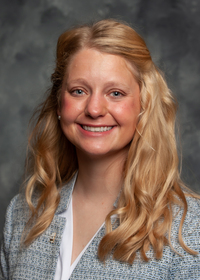Information Possibly Outdated
The information presented on this page was originally released on August 31, 2006. It may not be outdated, but please search our site for more current information. If you plan to quote or reference this information in a publication, please check with the Extension specialist or author before proceeding.
Cattle producers seek feed options
MISSISSIPPI STATE -- The summerlong drought has drastically reduced hay yields and quality, forcing many livestock producers to look for alternative forages and supplemental feeds and consider downsizing their herds.
John Anderson, agricultural economist with Mississippi State University's Extension Service, said the expanse of this drought, which is worse in the major cattle producing states of Texas and Oklahoma, will impact the cattle market and the previous national herd expansion.
“Many producers will have a hard time maintaining the herds they have, much less expanding,” Anderson said. “In the long term, a reduction in beef cattle numbers will help market prices, but in the short term, the forced sales of more cattle will hurt, especially at the local market levels.”
The drought will affect supply and demand for stocker and feeder calves this fall. Rains will be essential if key cattle-producing areas are to have any chance of providing winter grazing.
Charles Wax, state climatologist and MSU professor of geosciences, said there is no reason to anticipate a break in the drought since the state is in the driest months of the year: August, September and October. Although the 2006 drought and heat are not among the state's worst summers, the extreme conditions were compounded by how early they hit.
“The timing of this drought caused the most devastation. While the Coast has had below-normal rainfall all year, the drought started in the rest of the state in April,” Wax said. “As the growing season concludes, rains will become somewhat less important to most of us.”
Richard Watson, assistant Extension professor of forages, said most Mississippi pastures started the year in good shape, but declined rapidly. Fall rains will be important for establishing winter grazing for livestock.
“If producers can establish cool-season grasses, they will not be as dependent on hay and other feed supplies,” Watson said. “Mississippi's most common choices are annual ryegrass and tall fescue. Producers may want to consider planting small grain forages, such as oats, wheat and rye, to complement annual ryegrass by providing earlier grazing opportunities.”
Watson said this year some farmers may want to attempt a relatively new forage called brassica, a member of the turnip family that is ideal for forage. Developed for grazing, the turnip produces a high leaf yield and has excellent re-growth potential if not overgrazed.
“The turnip leaves provide high energy and low fiber. Do not allow cattle to graze below 3 or 4 inches if multiple grazings are planned,” Watson said. “The plants are frost resistant.”
Jane Parish, assistant Extension professor of animal and dairy science, said producers already should be looking at and comparing the costs of alternative feeds.
“The costs of many commonly used byproduct feeds are likely to increase along with hay prices as we approach winter, so it is important to check on seasonal price trends and current availabilities of these feeds,” she said. “Some useful byproducts include soybean hulls, whole cottonseed, cottonseed hulls and corn gluten feed.”
Parish said cattle need plenty of clean water and mineral supplements. They should not have to travel long distances for water.
“Shade is also important during the hottest days. Limited shade can be worse than no shade at all because it may cause cattle to crowd too closely together,” she said. “Plan to work cattle during the morning hours before their body heat increases during the day. Cattle that are not used to being worked and are easily excited will be more prone to heat stress.”
Parish said many producers are culling their herds to reduce the number of mouths to feed.
“Older cows and females that are not pregnant may need to be the first to go,” Parish said. “Cull deeper by marketing any cattle that are unsound in their mouth, eyes, feet or legs, or any cattle that are low performers.”
Other factors that may influence culling choices include animals with calving dates outside the desired time frame and bad temperaments.





